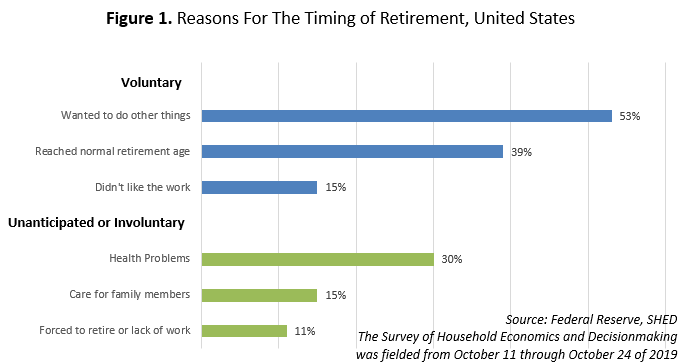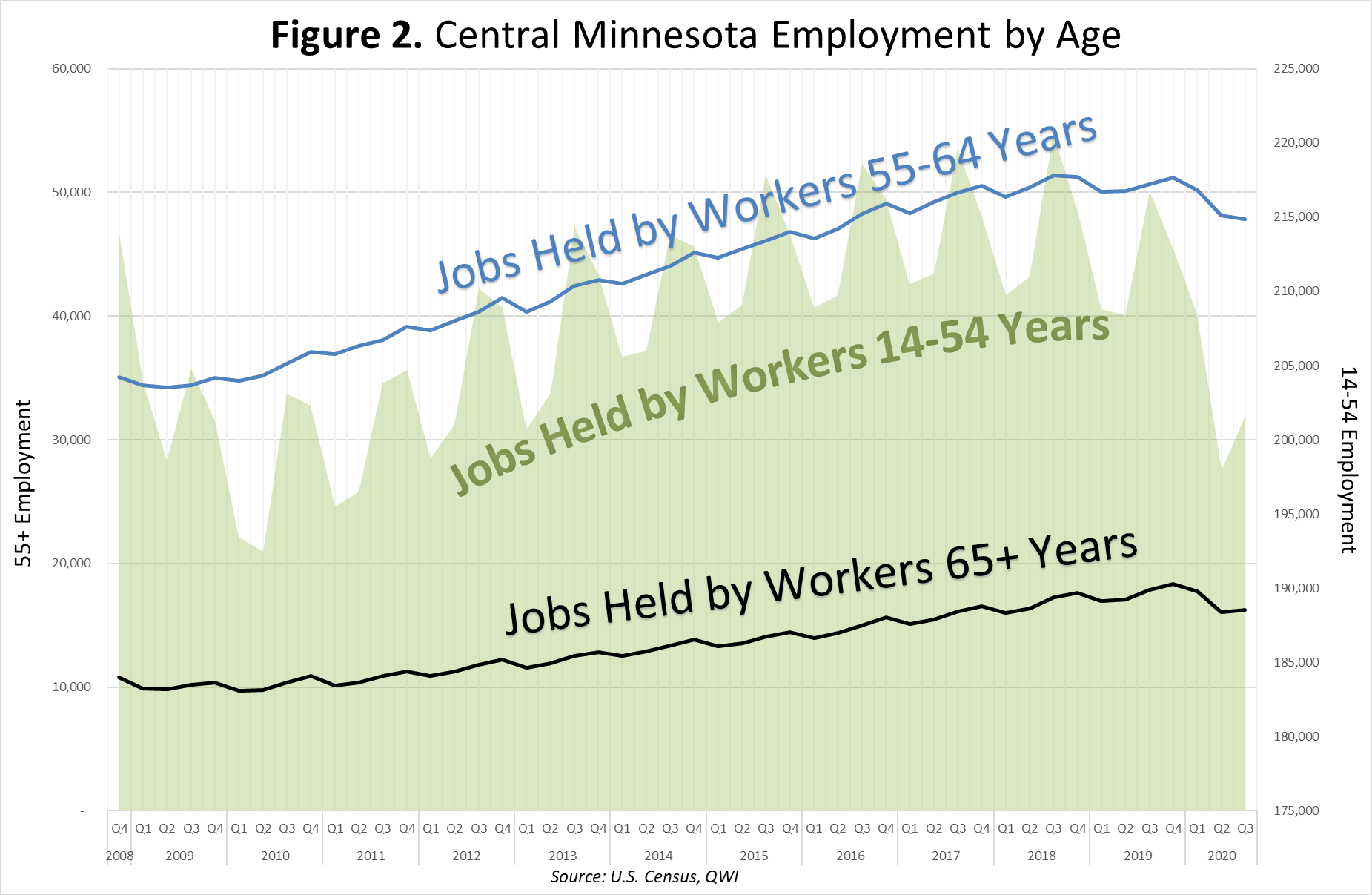 Central Minnesota is a manufacturing stronghold, with several global manufacturing firms operating there.
Central Minnesota is a manufacturing stronghold, with several global manufacturing firms operating there.
The region is especially well known for its expertise in food processing, printing, furniture manufacturing, appliances, machinery and heavy equipment manufacturing.
View our latest blogs on CareerForce. Want the freshest data delivered by email? Subscribe to our regional newsletters.
7/7/2021 9:00:00 AM
Luke Greiner
Over 22% of Central Minnesota's labor force is 55 years or older, representing a very important segment of highly skilled workers that employers rely on. Leveraging the experience of these workers is vital to employers in the region, but the recent economic shock could trigger a change in these workers' behavior.
Following the dramatic upheaval of 2020, workforce development professionals are curious what older workers will do next. Does taking retirement now look more attractive to retirement eligible workers? Or have the work-from-home possibilities incentivized retirement age workers to hang on thanks to increased flexibility? The answers to those types of questions will be very important to employers in the coming years. While we are not yet able to fully understand how older workers have responded to the events from 2020 and 2021, we can begin peeling back the first layer.
According to the Federal Reserve's May 2020 Report on Economic Well Being, most people who retired in 2019said that they retired before the age at which they would normally be able to claim Social Security benefits, with 51% retiring at 61 years or earlier. Educational attainment varied the results just slightly, with workers who have a Bachelor's degree or higher more likely to retire at 61 or earlier (55% compared to 50% for high school degree or less and 50% for workers with some college, a technical degree, or an associate degree).
Nationwide, 53% of retirees surveyed in the fall of 2019, before the pandemic, indicated that they retired because they wanted to do other things, while 39% retired because they reached normal retirement age, underscoring how many workers anchor themselves to a specific age to execute retirement, regardless of if it is the best decision. Unfortunately, 30% of retirees noted that health problems played a role in their retirement decisions, likely cutting short their savings goals (see Figure 1).

Employment data show that older workers, particularly those ages 55-64, continued to hold fewer jobs in the third quarter of 2020 than in the third quarter of 2019. Their share of job loss was the second highest from the third 3rd quarter of 2019 to the third quarter of 2020 (-9%). Only 19-21 year old workers suffered a larger decline in jobs held over the year (-9.5%), but considering that 27% of teenagers are employed in Accommodation &Food Services jobs compared to 4.3% of workers 55-64 years, the decline is more a reflection of a struggling industry, not necessarily struggling young workers.
The rebounding employment that started in the third quarter of 2020 appears to have stopped the job losses for older workers, but the most recent data tells us that workers 55 years and older held 4,417 fewer jobs in the third quarter of 2020 compared to the year prior (see Figure 2). After losing a job will older workers be motivated to regain employment, or will this inflection point cause many to consider an early retirement?

As more data become available, we will continue to learn what decisions our oldest workers are making about staying or leaving the labor force.
Contact Luke Greiner at 320-308-5378.